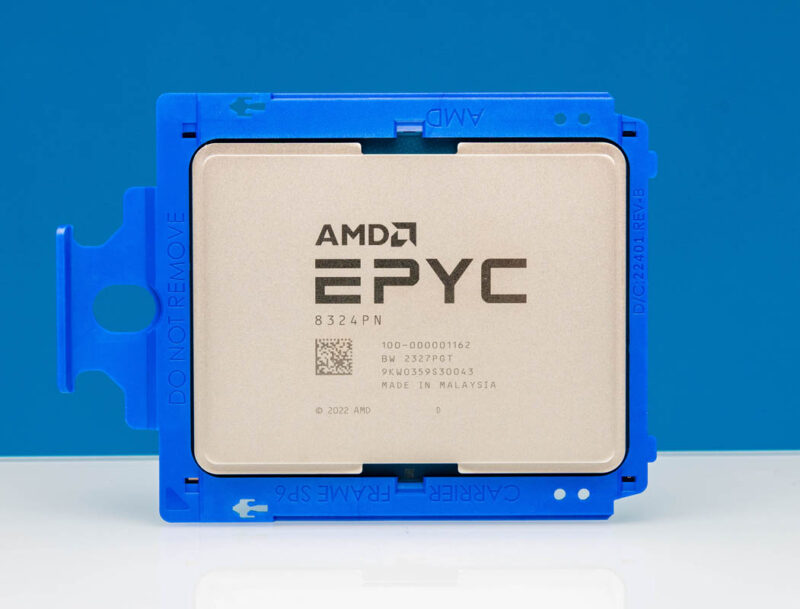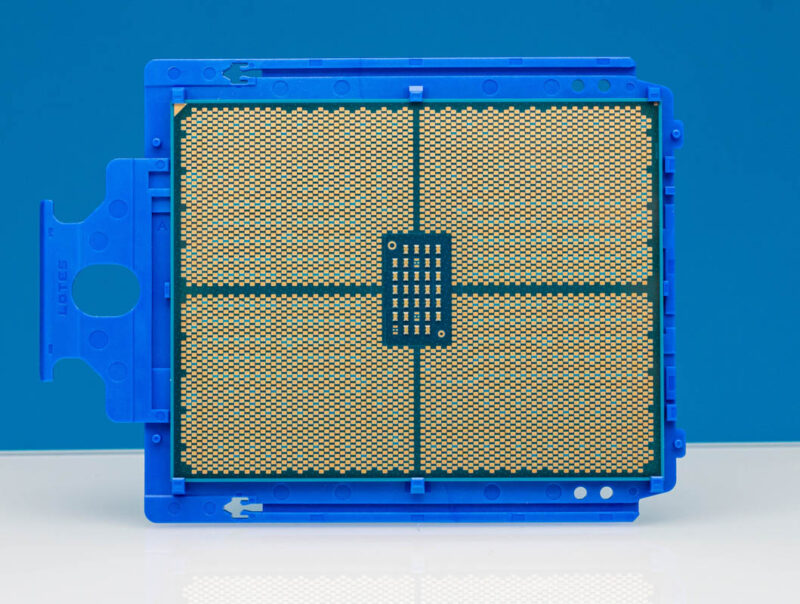The AMD EPYC 8004 series has two primary suffixes. Some parts end in “P”. Other parts end in “PN”. We figured we would explain the big difference between the two.
Difference Between AMD EPYC 8004P and 8004PN CPUs
First off, the AMD EPYC 8004 “Siena” CPUs are single-socket CPUs. As a result, they have the “P” suffix. This is similar to what we saw in the AMD EPYC 7001, EPYC 7002, and EPYC 7003 series, as well as the EPYC 9004 series.

AMD has several SKUs with the same part number, just with an extra “N” in the model number. Here we can see the AMD EPYC 8324P and AMD EPYC 8324PN.

The back looks very similar between the CPUs.

Here is the AMD EPYC decoder ring. We can see “P” for 1P capable only. Then “N” for NEBS friendly. NEBS stands for Network Equipment-Building System. NEBS has three levels of compliance. The big reason that the CPUs are being called “NEBS friendly” not NEBS compliant is that NEBS certification is not done just at the CPU level. So what AMD is really saying is that its “PN” CPUs have characteristics such that they can be designed into NEBS systems.

That “N” has a cost to it. First, the price is generally higher. For example, the AMD EPYC 8324P is $1895 and the EPYC 8324PN is $2125. The EPYC 8324PN is also a lower TDP part at 130W versus the EPYC 8324P at 180W. The PN parts also have a specific TDP and a wider operating temperature range. On the other hand, the standard P parts have configurable TDPs and a 15C narrower operating temperature range.

Of the six core count levels, each has both a P and a PN part.
Final Words
While all of the AMD EPYC 8004 series is designed for single-socket platforms like the Gigabyte ME33-AR0 and ASUS S14NA-U12. We have run the “N” parts in the same motherboards as the standard parts so they are socket-compatible as one would expect.

While AMD’s SKU definitions and pricing mean that NEBS-friendly parts will likely be found only in certain markets, the good news is that those are options.
Hopefully, this is an easy reference for folks to understand the difference between EPYC 8004P and EPYC 8004PN parts.





I would love to see a comparison on how that TDP translates to real life idle/average/peak power consumption and how or whether it affects the turbo speeds at different core usage patterns.
The PN SKUs do offer good advantages at higher operating temperatures even if the power/operating temperature difference appears relatively small.
See the Lenovo SE455 V3 product guide on Lenovo Press and note the PN SKUs support up to 64 cores at 55C but P SKUs top out at 8 cores
(Lenovo employee)